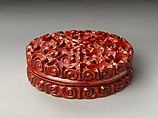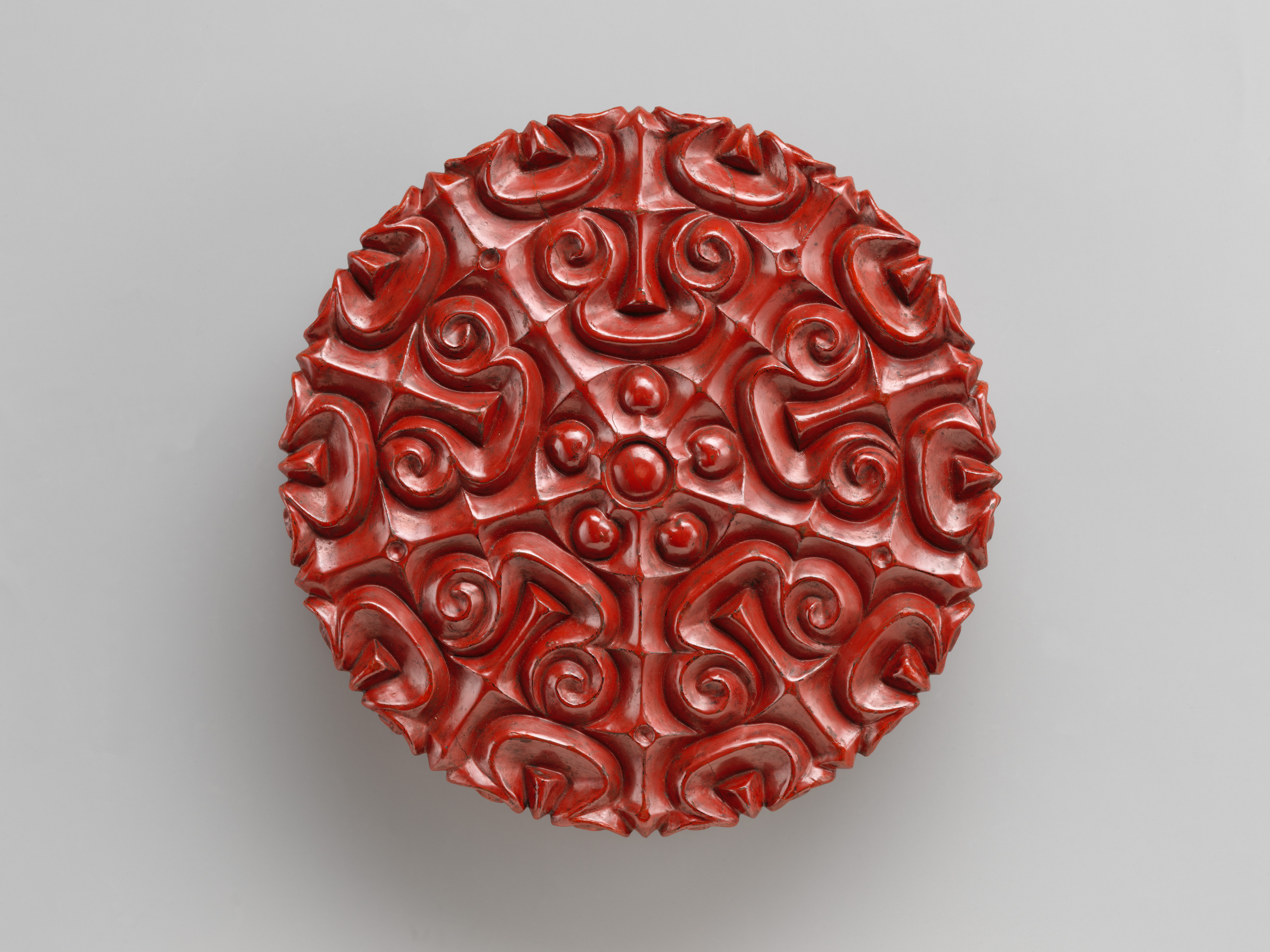Incense box with guri pattern
Not on view
Kamakura carving (Kamakura-bori) originated in the Muromachi period (1392–1573), when Zen Buddhism was introduced to Japan from China. Several Zen monasteries and temples were constructed in Kamakura during this period and Buddhist statues, artifacts as well as temple furniture were carved by skilled craftsmen often inspired by Chinese examples. They refined and further developed the techniques which involve the application of layers of black and red lacquer on the finely carved wooden surface. The Japanese artists created sophisticated copies of the painstakingly made Chinese carved lacquers, built up from numerous layers of lacquer. This round box (kōgō) was made to hold incense used in Buddhist rituals. The patterns are based on the Chinese stylized scrolls of sword-pommel shape (guri). The rendering of the motifs and the carving style reveal that the box was made by a Japanese artist.
This image cannot be enlarged, viewed at full screen, or downloaded.
This artwork is meant to be viewed from right to left. Scroll left to view more.



